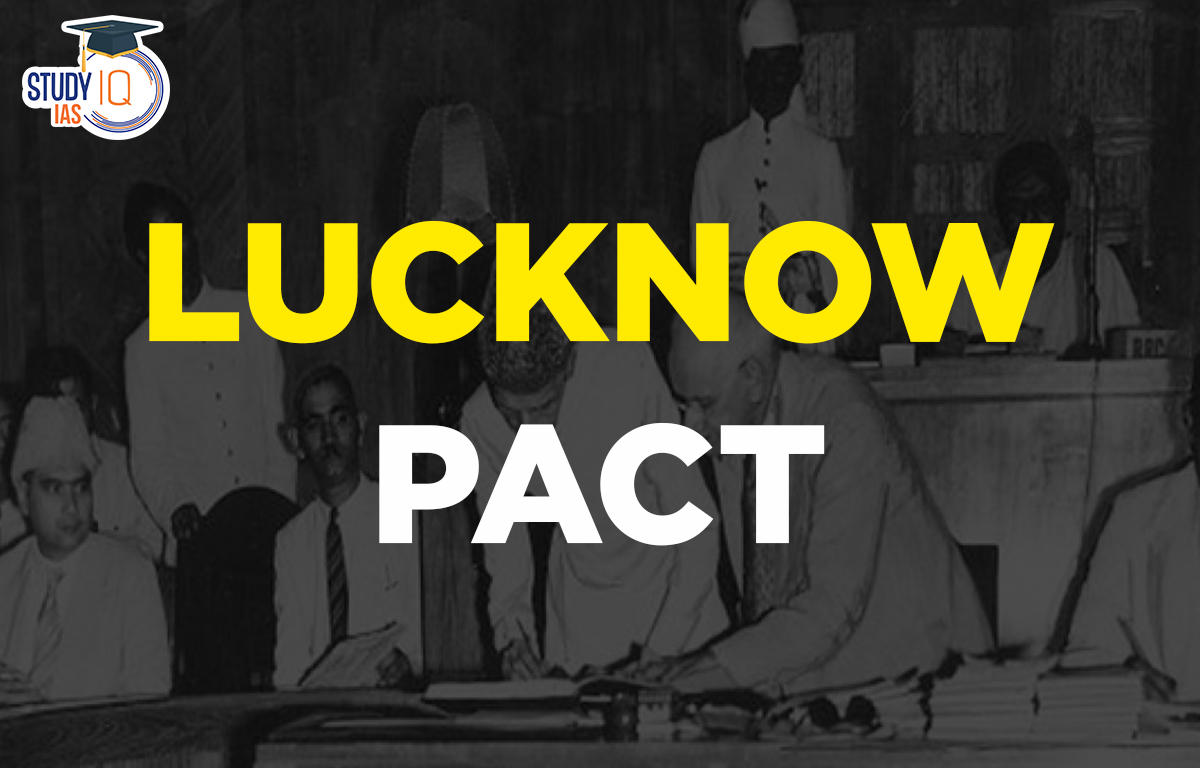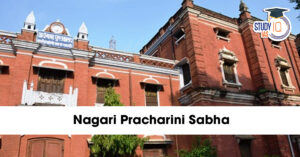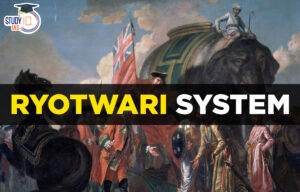Table of Contents
Lucknow Pact
Lucknow Pact was agreement signed between Indian National Congress and All India Muslim League in December 1916 in Lucknow. It was decided to spell out the agreed political ideals, particularly the aspirations for India’s “Self-Governance” following the war, at the yearly gatherings of both parties. During the discussion, Mohammed Ali Jinnah, a participant from both parties, urged applying pressure to the British government to liberalize the nation and give its residents more autonomy. Read all about Lucknow Pact in this article.
Because of this, a cordial relationship developed between the Indian National Congress and the All India Muslim League, leading Sarojini Naidu, the nightingale of India, to designate Mohammed Ali Jinnah as the “Ambassador of Hindu-Muslim Unity.” This essay will explore the Lucknow Pact’s nature and significance, which will be useful for UPSC exam preparation.
Lucknow Pact History
By 1906, a League had been formed with the primary goal of forging good ties with the British. At the time, this League was referred to as the “All India Muslim League” in a polite manner. The League, however, chose to shift its support for the British due to the Britishers’ determination to divide Bengal.
The All India Muslim League and the Indian National Congress, of which Mohammed Ali Jinnah was a member at the time, made a common decision to take advantage of the situation and pressure the British government into making reforms. For the first time ever, both parties appeared uninterested during a joint session.
When Tilak-led extremists and Gokhale-led moderates decided to meet in Bombay, the idea for Hindu Muslim Unity was born. The Muslim League joined them there, and together they developed their constitutional demands through discussion. The leaders of both parties had congregated at that point, sharing identical viewpoints and making comparable arguments for their demands.
A total of 19 elected members from both parties sent a message to the Viceroy for discussion of the constitutional revisions in October 1916, just a few months after the Bombay meeting. The proposals from the earlier meeting were examined and adopted at the subsequent meeting in Calcutta in November 1916.
The Lucknow Pact, 1916, was ultimately ratified by the Muslim League and the Indian National Congress at their respective annual sessions held at Lucknow in December 1916.’
| Indian National Movement From 1905-1918 | |
| Indian National Movement |
First World War |
| Partition of Bengal | Swadeshi Movement |
| Muslim League | Morley-Minto Reforms 1909 (Indian Council Act 1909) |
| Ghadar Movement | Komagata Maru Incident |
| Lucknow Pact | Home Rule Movement |
| Surat Split |
|
Lucknow Pact 1916 Nature
The Lucknow Pact aimed to provide Indian citizens self-government. It also implied that the Indian Council should dissolve. The Lucknow Pact of 1916 stipulated that more than 100 people could vote for president, and that there should be a 50/50 split of British and Indian residents on the Central Legislative Council.
The British government, not Indian finances, shall oversee any Indian affairs. The salaries of secretaries of states will be credited by the British government; no funds from India will be utilized for this purpose. Voting for the president will be open to all Legislative Assembly members.
It was suggested that the Legislative Assembly’s term be fixed at five years. Except as otherwise specified, the communities shall have distinct electorates. 150 people will make up the core Legislative Council. The Council must consist of at least 50% Indian citizens. Approximately one-fifth of the members will be nominated, while the remaining four-fifths will be elected.
Muslims should be allowed representation in the Central Council, with their average age making up about one-third of the entire membership. The universal adult franchise will be used to select all candidates, excluding those who have already been nominated. Minorities must be given equal participation in government according to their population.
Even though the league pledged to present the government with shared constitution suggestions, Congress approved the Muslim leadership’s position on a distinct electorate, which would be maintained until any group desired combined electorates. Additionally, Muslims were given a certain proportion of seats in the national and provincial legislatures.
Read about: Pitt’s India Act 1784
Lucknow Pact Provisions
Both the Muslim League and the Indian National Congress supported the concept of a distinct electorate. This showed that both parties understood the significance of local politics and how diverse communities’ self-serving interests in India may have contributed to the country’s division in 1947.
Although the significance of the Muslim community’s presence was recognised, it nevertheless opened the door for future communal politics. The league had no political presence before the 1916 Lucknow Pact. In the region of Bengal and Bihar, riots between members of various ethnicities started when it became clear that there was persistent tension between the populace and its authorities.
The concept of veto communalism is also included in the Indian constitution since the legislature could not pass a decision if three-fourths of the members belonged to the same religion. The worst blunder during the Lucknow session in 1916 was the acceptance of a third of the Muslim representation on the justification that they were a minority. It was correct up to a point, but soon after it concurrently gave rise to communal politics.
Every one of India’s varied communities had its own interests, which were made clear in the agreement. The parliamentary representation of Muslims was calculated province by province. One of Congress’s most dangerous Pacific efforts, it was. This Lucknow session in 1916 was undoubtedly held as a symbol of Hindu-Muslim cooperation at the time, which is why the dual community’s unity only lasted for a brief period of time.
Lucknow Pact Significance
Hindu-Muslim peace was thought to be possible thanks to the Lucknow Pact. Hindus and Muslims could push the British Empire to undertake political changes for the first time thanks to the signing of the Lucknow Pact.
As a result, there was a growing belief that British India already had the capacity to exercise self-government. The Accord served as the Hindu Muslim Corporation’s zenith. Prior to the accord, Congress and the Muslim League were considered as friendly rivals that fought each other and pursued their own interests.
Another significant result of the Lucknow Pact was the unification and friendly relations between various factions within the Indian National Congress, including moderates under Gopal Krishna Gokhale and extremists under Bal Gangadhar Tilak, Lal Bahadur Shastri, and Bipin Chandra Pal.
Read about: East India Company
Lucknow Pact Outcome
Although both organizations made a conscious attempt to present a united front, the Congress embraced the notion of distinct electorates, which suggested that the Congress and the Muslim League work together as separate political bodies.
This marked a turning point in the Muslim League’s two Nation ideas. When the leaders of the two factions convened, efforts to bring together the members of the two disparate communities were ignored. On the other hand, Congress’ divisive decision to support the notion of two electorates was a sincere effort to allay minority worries about majority power. Additionally, the residents were anticipating this reunion.
Lucknow Pact UPSC
At a joint meeting of both parties convened in Lucknow in December 1916, the Indian National Congress and the Muslim League came to an agreement known as the Lucknow Pact. The two sides stipulated in the agreement that religious minorities could be represented in provincial legislatures. Read all about Lucknow Pact for UPSC/IAS Examination.


 Revival of Machilipatnam Port in Andhra ...
Revival of Machilipatnam Port in Andhra ...
 Nagari Pracharini Sabha Revival: Backgro...
Nagari Pracharini Sabha Revival: Backgro...
 Ryotwari System in India, Features, Impa...
Ryotwari System in India, Features, Impa...





















